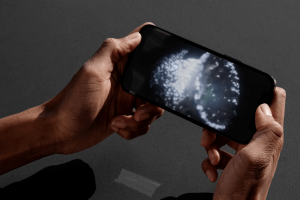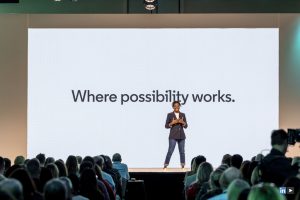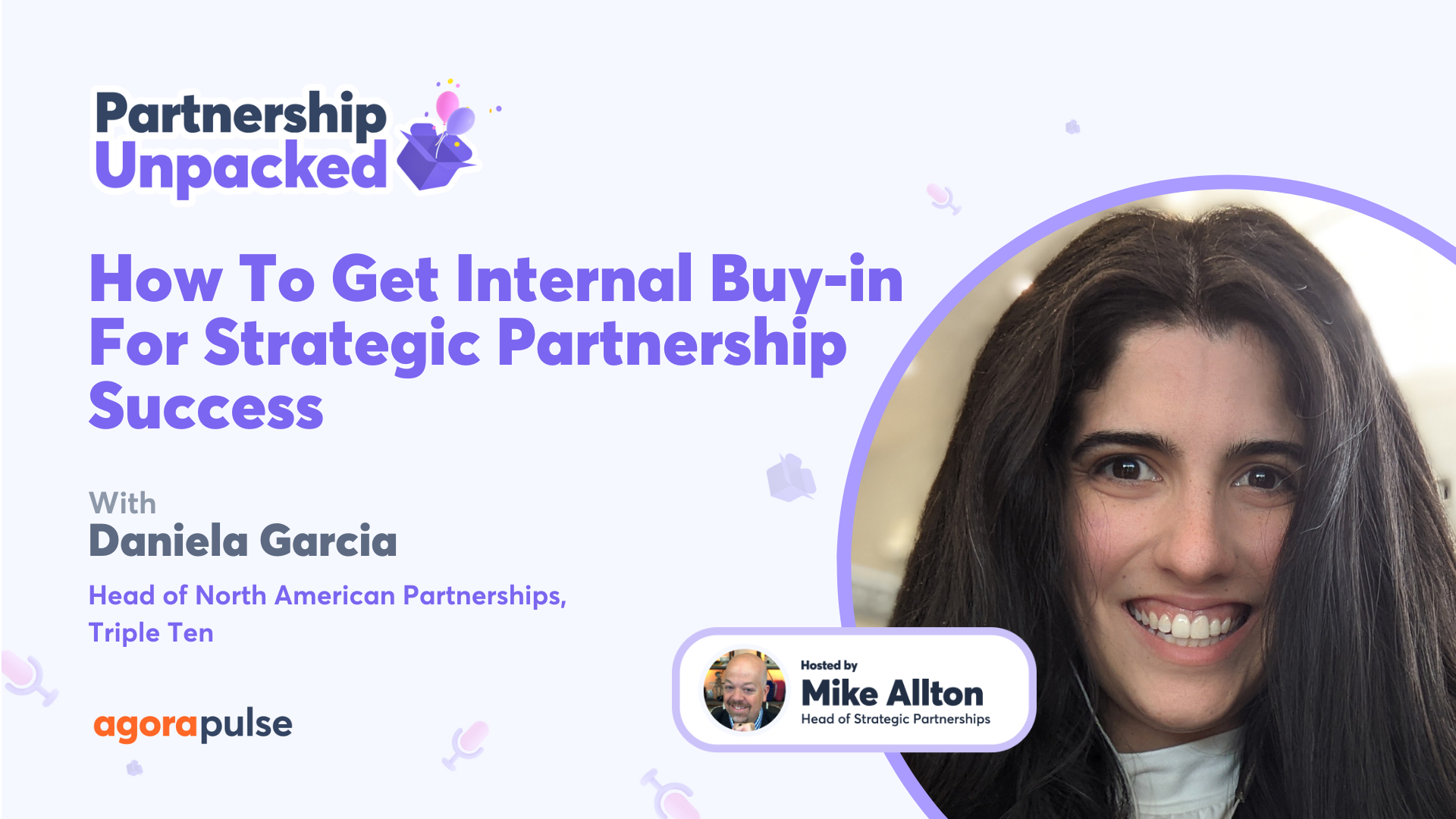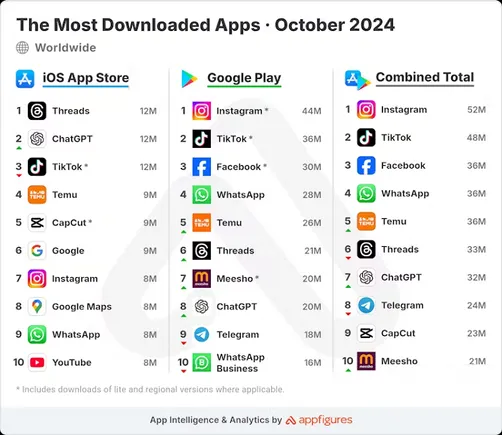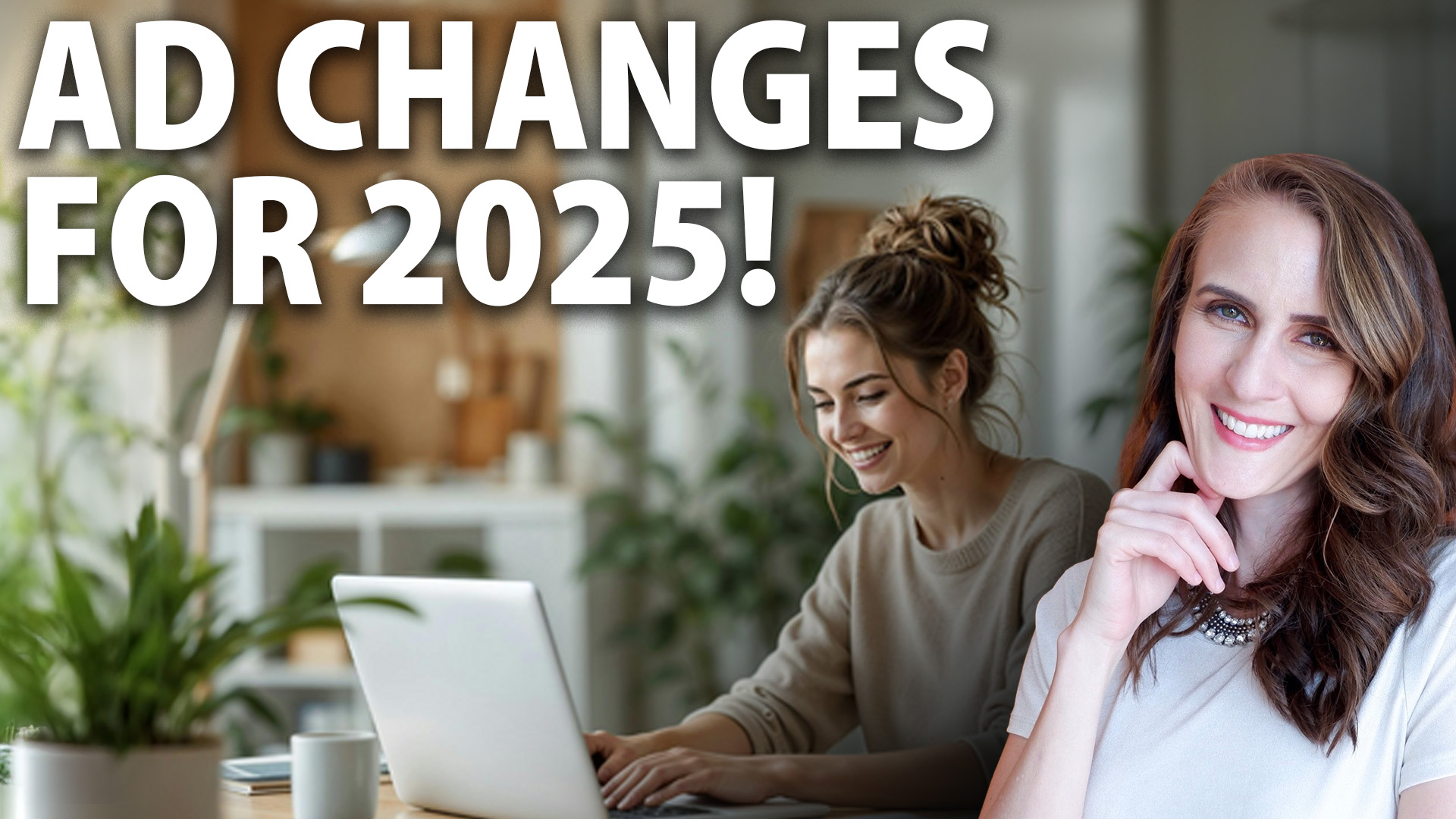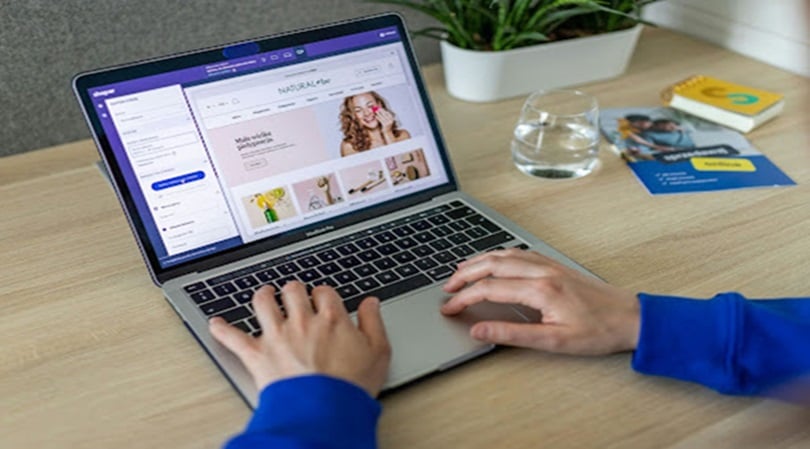Have you ever vouched for someone only to have them fall well short of the mark?
How’d that make you feel? Disappointed? Embarrassed?
How likely would you be to recommend that person again, and, worse yet, how would your recommendation be received in the future?
That’s the kind of problem that can occur when you don’t have buy-in from your internal stakeholders and your own organization when you kick off a partnership with another company. You might make promises on behalf of your company to a partner, only to be let down and embarrassed.
How can we avoid those situations?
That’s what we’re covering in today’s episode of Partnership Unpacked.
Welcome back to Partnership Unpacked, where I selfishly use this time to pick the brains of experts at strategic partnerships, channel programs, affiliates, influencer marketing, and relationship building… oh, and you get to learn too! Subscribe to learn how you can amplify your growth strategy – with a solid takeaway every episode from partnership experts in the industry.
If you’ve been listening to the podcast for a while, you know that I’m in the midst of implementing a brand new partnership motion at Agorapulse, nearbound. I’m working with our sales and revenue teams, operations, marketing, and customer success, to be able to leverage our partner’s client relationships to increase our own sales and retention.
I wrote an article about how I got buy-in for this initiative because it was about more than just the investment in new technology. It’s also my time, of course, but I also needed to get all of those other departments I mentioned aligned with the project. Because these kinds of partnerships cannot work if a bunch of the people involved don’t see your vision and aren’t investing in making it a success.
So where do we start?
That’s exactly what Daniela Garcia is going to talk to us about.
Daniela has just joined Triple Ten as Head of North American Partnerships and has spent years fostering partnerships and relationships in industries from cosmetics to B2B MarTech! She’s been featured by some of the top partnership publications and productions in the industry, and she absolutely embodies value-driven metrics and partner-led growth.
♉️ Why getting internal stakeholder buy-in is critical
♉️ How to identify and leverage internal stakeholders
♉️ What the real benefit to your external partners will be
Learn more about Daniela Garcia
Resources & Brands mentioned in this episode
Full Notes & Transcript:
(Lightly edited)
How To Get Internal Buy-in For Strategic Partnership Success with Daniela Garcia
[00:00:00] Mike Allton: Have you ever vouched for someone, only to have them fall well short of the mark? How’d that make you feel? Disappointed? Embarrassed? How likely would you be to recommend that person again? And worse yet, how would your recommendation be received in the future? That’s the kind of problem that can occur when you don’t have buy in from your internal stakeholders and your own organization.
When you kick off a partnership with another company, you might make promises on behalf of your company to a partner, only to be let down and embarrassed. How can we avoid those situations? That’s what we’re covering in today’s episode of Partnership Unpacked.
This is Partnership Unpacked. Your go to guide to growing your business through partnerships quickly. I’m your host, Mike Alton. And each episode unpacks the winning strategies and latest trends. From influencer marketing to brand partnerships. And ideas that you can apply to your own business to grow exponentially.
And now… The rest of today’s episode, welcome back to partnership unpacked, where I selfishly use this time to pick the brains of experts at strategic partnerships, channel programs, affiliates, influencer marketing, relationship building. Oh, and you get to learn to subscribe to learn how you can amplify your growth strategy with a solid takeaway.
Every episode from partnership experts in the industry. If you’ve been listening to the podcast for a while, you know that I’m in the midst of implementing a brand new partnership motion at Agorapulse called Nearbound. I’m working with our sales and revenue teams, operations, marketing, and customer success to be able to leverage our partners, client relationships, to increase our own sales and retention.
I wrote an article about how I got buy in for this initiative because it was about more than just the investment in new technology. It’s also my time, of course, but I also needed to get all those other departments I mentioned aligned with the project because these kinds of partnerships cannot work if a bunch of the people involved don’t see your vision and are investing in making it a success.
So where do we start? Well, that’s exactly what Daniela Garcia is going to talk to us about. Daniela has just joined triple 10 as head of North American partnerships and has spent years fostering partnerships and relationships in industries from cosmetics to B2B martech. She’s been featured by some of the top partnership publications and productions in the industry.
And she absolutely embodies value driven metrics and partner led growth. Hey, Daniela, welcome to the show.
[00:02:32] Daniela Garcia: Hey, Mike, thanks so much for having me on and what an intro. Wow. I sound so impressive. [00:02:37] Mike Allton: You are impressive. I couldn’t wait to get you on this show. And so I’d love to just kind of level set everyone, let them know how you guys started in partnerships and more about the work that you’re doing today at triple 10. [00:02:47] Daniela Garcia: Yeah, so I got really, really lucky. I started working for a cosmetics company that was like small internally but big externally. So it was a company called LaTweeze and it was like a an illuminated tweezer, which for some people might be like Okay, but for the buyers at Nordstrom and even Marcus and Kroger, it was super hot and I got super lucky in that we weren’t massive internally, so as like a global account executive, I got to wear a lot of hats and even got to explore some private label relationships.
with like Disney and Sephora. And then suddenly 2020 happened and the world stopped in the world. The cosmetics really stopped and I had to pivot. And I was lucky enough that the team at lead forensics could see that like my skillset was really transferable and that my enthusiasm to learn about the industry, you know, was there and prevalent.
And so I was able to start with them and just, you know, the last three and a half years. Got to work with agency partners and got to expand, you know, that channel, that whole program. And now just this month started, as you said, head of North American partnerships at triple 10, which is a digital bootcamp.
And so I’ve gone from cosmetics to MarTech to now higher learning. And I could not be more excited and just grateful that I do have these transferable skills and people believe in me.
[00:04:09] Mike Allton: Okay, we’re gonna have to come back to the whole glow in the dark tweezer thing another time that’s just fascinating and I didn’t know but it makes Sense how the cosmetic industry was impacted by kovat, but tell me real quick more about triple 10.
What is a digital boot camp? What does that mean?
[00:04:25] Daniela Garcia: So essentially, you know, it’s like part time programs that at the end of it are Students are given all of the skills and certifications that they need to start a career in the technology industry. Whether it’s as like a QA engineer, a BI analyst, a software engineer, wanting to become a full stack engineer.
You know, we have those programs and they’re really designed to fit into a full time lifestyle. So if you’re a full time mom, if you’re a full time employee, if you’re both, you can still fit in these courses and that’s kind of how it’s built. And then we guarantee job placement at the end of it. So it’s.
In six months of completing your course, you have not been placed. You get your entire tuition back.
[00:05:02] Mike Allton: Brilliant. And what kind of partnerships do you work on there? [00:05:05] Daniela Garcia: So it’s a totally new program. So we’re working on partnerships with nonprofit organizations right now, really trying to like work with communities that, you know, are working on supporting minorities to get involved into tech, supporting the LGBTQ community, get into tech.
One of our most prevalent partners is like women who code. So we’re offering members of these communities. Partial scholarships to our program. And then we’re also working with like benefits coordinators and HR coordinators to provide our programs as like an employee benefit, you know, for employees of a place like, like drive thrus or, you know, what we consider like an entry level position, and then you’re kind of like, okay, this is my stepping stone into the rest of my career.
We offer that as like a benefit for those employees to be able to, you know. Pivot and then even get a job back with that exact same company. You know, if you were driving for McDonald’s and now you’re a software engineer, that head nod is everything.
[00:06:00] Mike Allton: Yeah, that’s awesome. I love it. We will of course have a link to triple 10 in the show notes to some of those fantastic programs.
So you’re starting a whole new program and we want to talk about internal. Buy-in. And so I wanna start by just asking what do we really mean? What does that mean to you? When I say internal buy-in or when you’re talking to your own internal stakeholders and you want that, that buy-in, what does that mean to you?
Why is that important and what are the risks if we don’t get it?
[00:06:28] Daniela Garcia: Yeah, I, what it means to me is that the entire team recognizes the importance of partner. In achieving all of their goals as well. So a lot of companies will see a partner channel as like its own department and give it its own, you know, targets and its own metrics.
But in reality, it should exist within every department and every metric. So it shouldn’t be a matter of. How much partner led growth or like partner led sales are we going to have? It’s how much, you know, of like marketing’s targets are going to be partner led. How much of outbound sales targets are going to be partner led?
How much of inbound is going to be partner led? I think that’s a much more mature approach to partnerships, and it creates more just like Collaboration and community internally. So it really means everyone identifying the partner program as a means to their own growth as well. And the risk of not having that is you falling short for partners.
You know, if, if marketing doesn’t see the, that supporting partnership supports their growth. Then they’re not gonna, you know, be as present when you need assets, when you need marketing support, when you need a little bit of budget, when you need a campaign. And the same thing goes for, you know, customer success.
If customer success does not see how partner led growth helps them with retention, you know, they’re not going to take those clients as seriously as they should. And they’re not going to approach them with the same level of care and like white glove experience as they should. I hope that that makes sense.
[00:07:49] Mike Allton: And I love the shift in mindset from having partnerships be its own kind of standalone motion play initiative, whatever you want to call it, versus something that’s layered on top of, or below, or with, or alongside every other department. In the organization, and I’ll be the first to admit, you know, Gora Paul’s, you know, I’m the only one here running partnerships and we’re a long way from being what I would refer to as a mature partnership department.
But we’ve certainly come a long way. A few years ago, I was definitely doing my own thing. I wasn’t integrated into other departments in the other risk that that. Exposed was that what I was working on wasn’t aligned with what every other department was working on. Most of all marketing. I was doing my own events.
I was doing my own initiatives and we weren’t talking about content calendars. We weren’t talking about themes. We weren’t talking about targeted audiences. So yeah, having that partnership play integrated in the entire organization is going to lay all those risks and you When it comes to a motion like partnerships, how do you go about even identifying who those internal stakeholders should be?
[00:09:00] Daniela Garcia: Talk to everyone. I don’t think that there’s anyone in your organization that you should not be treating and speaking to and collaborating with like they’re a stakeholder. At the end of the day, every single member of your organization can support your partners in some way and can be supported by your partners in some way.
So I think it’s just having an open mind and treating the janitor the same way you treat the CEO.
[00:09:22] Mike Allton: Fantastic. Fantastic. Now, a moment ago, you talked about how it would be important to look at what you’re measuring the goals in partnerships rather than, you know, a certain percentage of partner led leads or growth.
But rather, how is that impacting each departments? How do we go about identifying some of these internal KPIs and how do we make that work between our partnership department and these other departments?
[00:09:48] Daniela Garcia: Um, you know, we’re always going to be lucky in that like key KPIs are going to be well known, you know, and just like when you’re having general like.
All hands, like if you’re a partner manager, if you’re in partnerships, like you should be at every all hands meeting and keeping your ear to the ground, maintaining those relationships with department heads. And, you know, when people are doing their reviews at the beginning and end of each quarter, what were the metrics that were important to them?
What are they bragging about? What are their goals for the next quarter? These are all things to keep in mind and take note of. And when you’re taking those notes, attach a partner to that KPI, like attach. So let me give you like a better example. So at Triple 10, we have an ambassador program and a big initiative for, you know, the department head for that is getting ambassadors.
To do more talks, you know, and to have more opportunities, you know, at events, webinars, podcasts, things like that. Well, that’s a huge benefit to our partners. You know, our community leaders who do have, you know, these podcasts that do host like webinars who do host like events regularly. It is a benefit to them to have a network of ambassadors, you know, in the tech industry that do want to be Thank Like sharing their story and sharing their experience.
So what was a hurdle for this department head is now a benefit to my partners. And so that’s kind of the way that a partner manager really needs to be thinking. And it’s the most creative role in any organization, because you really do need to make one plus two equal five.
[00:11:15] Mike Allton: That’s exactly right. Yeah. And I love your point about.
Paying attention in meetings, whether they’re company wide meetings, all hands, department meetings, listen to what the other leaders in your organization are planning on doing, what they’re working on, what’s important to them, and always be thinking in the back of your mind, how can I help that? Who can I line up?
What partner, what influencer, what ambassador could we potentially bring in? Whether it’s a marketing play, it’s a sales play. It’s a customer retention play, right? Somebody struggling with email marketing. We’re a social media marketing company, but I know plenty of email marketers that I could connect with them and help them.
We could get them into a webinar or something like that. That’s fantastic advice. Thank you for sharing that. Now, as we’re talking about metrics, one of the key metrics that you may be missing on is how successful your social channels are doing. Here to help us with that is Daryl Prail, CMO here at Agorapulse.
[00:12:09] Darryl Praill: It’s the Arc de Triomphe. Can you imagine if you’re in charge, if you’re the CMO of Marketing Paris, what are your main channels? Wow. The Arc de Triomphe. There’s the Eiffel Tower. There’s the Louvre. Those are your channels you’re going to use to drive tourism dollars in. Okay, now, but you’re not the CMO of Paris.
In fact, you’re the CMO of your company, Product Service. So what are your main channels? Well, I’m going to guess they’re things like pay per click, maybe trade shows events, maybe content. Those are all pretty predictable, right? Let me ask you this question. Are you treating social media as a main channel?
By the way, only 1. 8 percent of you today measure social media and can prove an ROI in that investment. HubSpot and Gartner say social media is the number one channel to invest in this year. Are you doing it? If not, I can tell you why. You’re not doing it because you don’t have the tools, you don’t have the mentality.
And that’s okay. We’ve got you covered. You change the mentality, we’ll give you the tools. Tracks all the ROI for you. One place to manage all your social media activity. Your number one channel. Change your success. Treat social media as a channel. One CMO to another. My name is Daryl. I’m with Goltz. I’ll talk to you soon.
[00:13:26] Mike Allton: Alright, Danielle, at the beginning I said I like to pick the brains of my experts, and that wasn’t hyperbole. I’m serious. ’cause here’s an example. There’s this concept that I’m studying right now called role pairing, where you match up internal stakeholders with their counterparts, with your partners such as sdr, SDRs, with sdr, so that they too could form stronger relationships and strengthen the partnership.
I haven’t yet actually implemented pairing. Have you? Have you seen any success with it?
[00:13:51] Daniela Garcia: Not as much as what, you know, like down to like the sales team, but definitely, you know, marketing meets marketing all the time, and that’s like really important that they do, and I definitely find that they tend to They just kind of tend to like geek out together.
And it does support getting that internal buy in because now, you know, you have these two creative minds working together towards the same goal of sharing ideas. And I really love the idea of like connecting like sales heads and like everyone else. I’ve only ever done it with marketing just because, you know, you need them to work together to create campaigns, but definitely I can see how it can support a partnership, strengthen it, make it more real for members of like different teams too.
Cause now you’re sharing, you know, best practices, you’re sharing word tracks, you know, especially on the sales side of things, like two SDRs are talking and they’re sharing each other’s like outreach methods, you know, both are getting stronger and better, but a hundred percent from a marketing perspective, the teams are always so excited to work together.
They always geek out a little bit. They’re always sharing tools and you know, you start seeing referral links go back and forth. And that’s how, you know, you’ve got that buy in that you really need.
[00:14:56] Mike Allton: I love it. I love it. I have to admit, I’ve never done that, at least not consistently, even on the marketing side.
And I think to be transparent and frank, I think I’ve probably been too controlling over the relationship between our organization and the partner. And I’ve kind of insisted on being that single point of contact. And what you’re suggesting is, first of all, I need to loosen up. And second of all, if I’m able to broaden out and bring in those corresponding marketing partners and team members or sales team members, or even customer success team members, they’re going to develop their own relationships and a lot of rapport and productivity is going to happen as a result of that.
[00:15:33] Daniela Garcia: Absolutely. A hundred percent. And on top of it, like you’re also going to have. I don’t know, there’s always a difference between a one on one friendship and a friend group. So, as the partner manager, you need to be the glue of the group. But at the day, there’s gonna be a funny guy. There’s gonna be a planner.
There’s gonna be, you know, the… Person who’s gonna cause a little drama. Like, you know, the friend group dynamic always creates for better memories, better collaborations, and just better results. You know, the more the merrier, always, in any situation, including partnerships.
[00:16:11] Mike Allton: Love it, love it. Now, for someone who might be new to an organization like yourself, or perhaps they’re launching a brand new partnership program, what advice would you give them? [00:16:20] Daniela Garcia: Meet with everyone. Meet with everyone. Meet with your internal buyers, meet with some, like, end users of your tools, service, program, you know, whatever it is that you guys are offering. Try to find within your ecosystem. system because odds are you already have partners you don’t know about. Odds are there is someone out there talking about your company, being an advocate, referring business to you, talk to those businesses.
On top of talk to everybody, I’m even going to give two pieces of advice. Also, when you’re talking to them, ask them what other things they’re doing alongside. What else is complimenting your offering? Because those are your hidden partners too, you know, like one big thing and I’m kind of giving away a little bit here that I noticed when I was doing this internally was that 43 percent of our recent graduates had done some kind of like ride share side hustle during the program.
Well, now that’s just like totally perked my mindset to be like, well, I really should explore a partnership with a ride sharing company because. Our end users are already pairing us, whether we like it or not. They’re already putting us together. And so for a lot of, you know, in the MarTech space, this was a move where it was, well, you know, more and more of our users, you know, at lead forensics are using HubSpot.
So when we found that more of our retaining clients were using HubSpot, it became very obvious that we needed to put all hands on deck on a HubSpot integration. So when you’re talking to clients, you’re talking to end users, when you’re talking to internal, you know, just your team internally, you’re going to get a better idea of what your ecosystem looks like.
You’re going to get a better idea of what is going to be complimentary to your offering, especially when you’re newer and you might not, you know, very surface level, you know what marketing has put out there about the company. Now it’s time for you to know, you know, what. An actual user experience is like
[00:18:09] Mike Allton: love it.
I’m actually furiously taking notes because those are fantastic ideas talking to everybody and specifically the nugget that I took out of there was that as a sass company, I need to be exploring with our own customer base. What other tools they’re using to expose potential partnerships, whether their integrations or marketing partnerships or co selling motions, whatever the case might be.
That’s not something we’ve done with. I don’t want to say we haven’t done it at all, but we haven’t done it with that intention in mind. Right. We’ve certainly talked to our users. We’ve explored with them what challenges they’re having. And of course, some of their other solutions have come up in those conversations.
But to actually go into it with the intention of discovering what are the tools. Are you already working with or what companies? If I’m gonna broaden it right for all of you listening, maybe you’re not a sass company. Maybe you’re an agency or, you know, maybe you’re providing a service of some kind. If you’re talking to your customers and exploring with them, what are the solutions are they already using that might be complimentary to you?
Those are great potential partners, right?
[00:19:07] Daniela Garcia: Absolutely. Yeah. And then you can even approach that partner with, Hey, a certain percentage of our clients use you too. I wonder what percentage of your clients are using us. [00:19:16] Mike Allton: Yeah. Yeah. And then you get them into reveal and you start to look at some of that account mapping and the overlapping, right?
Fantastic. Fantastic. We’ve talked about reveal a lot on this show. We’re huge fans. Daniel, this is so cool. How does everything that we’ve already discussed so far lining up our organization, our internal stakeholders, lining up our KPIs? How does all that actually benefit our partners?
[00:19:40] Daniela Garcia: Well, honestly, because it gives you an idea of what kinds of benefits you can offer a partner.
When you have the internal buy in of success, when you have the internal buy in of marketing, when you have the internal buy in of sales, what you start to find is actual benefits to provide partners. So, you know, like I mentioned about that ambassador program. That was a big benefit to our partners because now our partners have, again, like this network of industry leaders that they can turn to and use for their events, you know, in a customer success side of things, it’s beneficial to know, you know, how important retention is when you’re talking about, you know, from an agency partnership standpoint of wanting partners or wanting clients to be stickier and longer term, and not necessarily wanting to work month to month, but wanting to work.
Year by year, you know, these are different benefits that can support a partnership. If you align it correctly and you really try to benefit everyone, it’s a game of compromising, you know, like when you’re in the role of partnership, it’s how do I make everybody a winner? And then in the end, I’ll be the winner because everyone else is winning.
So KPIs that you can transform into benefits, the stronger it is for your partners.
[00:20:48] Mike Allton: Absolutely makes sense. I love it. I can recall in the past me going to specific partners with ideas for how we could co market together. And then let’s just say it’s a specific kind of marketing motion comes out of that plan.
Then I go back to my marketing team saying, Hey, we need to do this because we’re doing this with the partner. And I didn’t get to their buy in first, so now I’m telling them how they need to do a certain marking thing, whether it’s send an email or create a blog post, something like that. And now I’m facing friction internally.
Whereas if to your point, I would have gone to the internal team first. It might have surfaced or they might have just come out and said, Hey, yeah, Mike, you know what? We need help with the new book that we’re working on. It’d be great to have a partner brand work on this ebook with us. And then I can go back to the partners and bring them alongside and everybody’s already excited about that.
So that’s fantastic. Fantastic.
[00:21:41] Daniela Garcia: I was going to say, like start that conversation. It’s like, you know, you have a meeting with a team, a team member internally and like two questions to ask are when you first heard that they were going to be starting a partner program, what were you hoping that that partner program could help you with?
And then second is what’s a wish list that you have of partners who are some businesses you want to work with Once you start covering the conversations that way. I mean those conversations always end with that team member so excited Excited that you’re starting excited that you’re there. Um, and yeah, they’ll start telling you how they can help
[00:22:14] Mike Allton: love this again I’m taking notes.
Uh, this has been fantastic and eye opening for me. So I know my listeners are going to appreciate All of your intel, then I just got one more question and it’s, it’s my favorite question. I asked this of every single guest and I, and I can’t wait to hear how you answer. How important have relationships been to your career?
[00:22:33] Daniela Garcia: Tremendously important. I mean, I’m in the business of relationships. That is what this role is. So they’ve been super impactful. I don’t think I’d be. The head of North American Partnerships right now, if it wasn’t for the relationships that I’ve cultivated, if it wasn’t for the way that I am able to cultivate those relationships too, like just having that skill set alone of like knowing how to nurture a relationship, I just don’t think that there’d be any way that I’d be in this industry without it.
And I think if you are a partner manager out there who doesn’t value relationships, A, I’m really curious to know how you’re doing your job and B, what?
So, yeah, I think they’re fundamental to my career. 100%.
[00:23:20] Mike Allton: Awesome. Awesome. And then of course is why I asked the question because you are 100 percent correct. Relationships are critical. They’re foundational to any good partnership. And I also, honestly, I personally, I love this question because It could be answered with one word, but by asking how important something is to ourselves, we’re naturally drawn to think about why is that, right?
And so I’m asking you when you’re sharing why that’s important to you. And I’m also hopefully prompting all of you who are listening to be thinking about why relationships are important. To you and how you can continue to foster and grow the relationships you already have to further your career. So thank you, Danielle, for helping us all again, refocus and think about that.
This has been fantastic. And I know folks are going to have more questions for you, particularly on this internal buy in thing, because they want to know how to get their CEO to buy into the next proposal. Where can they reach out to you? How can they learn more about you?
[00:24:18] Daniela Garcia: Yeah, you can reach out to me on LinkedIn, Daniella Garcia, if you’re wondering if I’m the the Daniella Garcia.
It’s the one with all of the TikTok videos in her profile. . You can also feel free to email me at daniella.Garcia@tripleten.com, and you can also follow me on Instagram at partner with Danny d a n I.
[00:24:37] Mike Allton: Awesome. Awesome. Thank you, Daniela. And thank you everybody else for listening. We will have all of Daniela’s links in the show notes.
Definitely go follow her and connect with her on LinkedIn and watch some of those videos. She’s fantastic. Until next time, see ya. Thank you for listening to another episode of Partnership Unpacked, hosted by Mike Alton and powered by Agorapulse, the number one rated social media management solution, which you can learn more about at agorapulse.
com. If you enjoyed this episode, please subscribe on your favorite podcast player. Be sure to leave us a review. Your feedback is important to us. And if you want to be part of our audience during live broadcasts, take a look at our calendar at agorapulse. com forward slash calendar. Until next time.





